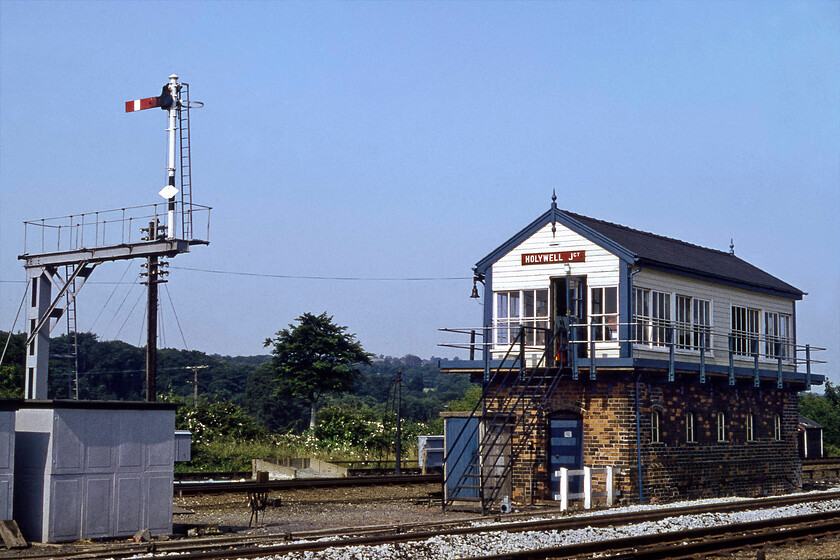|
||||
The fine L&NWR Holywell Junction signal box is seen locatedbetween the up and down fast lines. The box is a classic example of an L&NWR Type 5 box that was fitted with a fifty-four lever frame that was considerably reduced over the years as the track was simplified and rationalised. It was reduced further from a quadruple layout to a double track soon after this 1981 photograph was taken. Notice the large bell hanging on the end of the box. This was a feature on a number of the boxes along the North Wales coast used, in times past to warn road traffic that the level crossing gates were about to be closed for an approaching train. |
||||
|
|
||||

